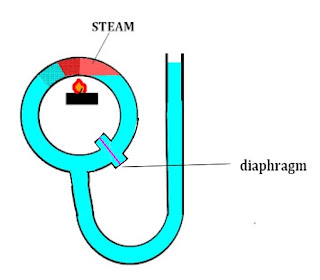Daemon wrote: ↑Fri Oct 28, 2022 3:15 pm
.. I'm on vacation over seas atm, but I'm taking some time to work on it. I've got a mill, lathe and a few engineers from Siemens here interested in helping me get a piston model running. So I'll probably have some great insights to post to my channel next week.
Just subscribed to make sure I don't miss anything.
Still looking forward to seeing those explosions!
Trying to be patient, but it's been over a month, not that I'm anyone to complain, I think I proposed at least two experiments and/or "rice engine" designs/modifications I still need to follow through on.
I guess I keep just proposing ides hoping someone else will try it and save me the time and trouble.
I think I need to just treat my workshop like a job, go there and do something. Difficult, to actually arrange the time though.
Anyway, looking forward to any updates from anyone on this thread.
Recently I've been looking deeper into the "Zero motor".invented by John Gamgee.
I don't consider anhydrous ammonia anything anyone should fool around with, but was just wondering what a bit of household ammonia (mostly water) might do for the rice engine. An absorption refrigerator also uses hydrogen gas. To maintain partial pressure in the system and I guess, keep it from imploding.
About Gamgee and his zero Motor, I came across an old Naval document, just a routine report detailing activities of the day that reads:
Report of Passed Assistant Engineer W. A. Windsor, of U.S.S. Standish, August 29, 1881.]
At the Washington yard, the first place visited by the vessel, in the department of steam engineering an excellent opportunity was presented for the cadets to study the construction of the cylindrical boilers, in all stages of construction, being made for the U.S.S. Enterprise. The laying off of the plates, drilling and punching of the holes, flanging, riveting, splitting, and calking of seams, and drilling of holes in the tube-sheets were witnessed and explained to the cadets.
The manner of strengthening the cylindrical furnace tubes of these boilers with the Adamson flanged joint, was particularly noticed. The fitting up of a Waddell equilibrium steam-valve was explained. In this department the cadets inspected the ammonia gas-engine of Professor Gamgee. This machine is a compound rotary engine, and is intended to be operated by gas generated from pure anhydrous ammonia from the heat of natural surroundings, whether of air or water. * * *
Not sure if the "***" indicates redacted material.
https://www.history.navy.mil/research/l ... ibben.html
The citation is from way way down on the page somewhere, search for a key work to locate it more quickly.
This is an official US Navy document proving a Gamgee Zero motor of some sort existed and was routinely displayed to cadets.
That's not to say that it actually performed as intended, but it was studied for some months and approved by president Garfield who at the time of that report was lingering on his death bed in the hospital.



